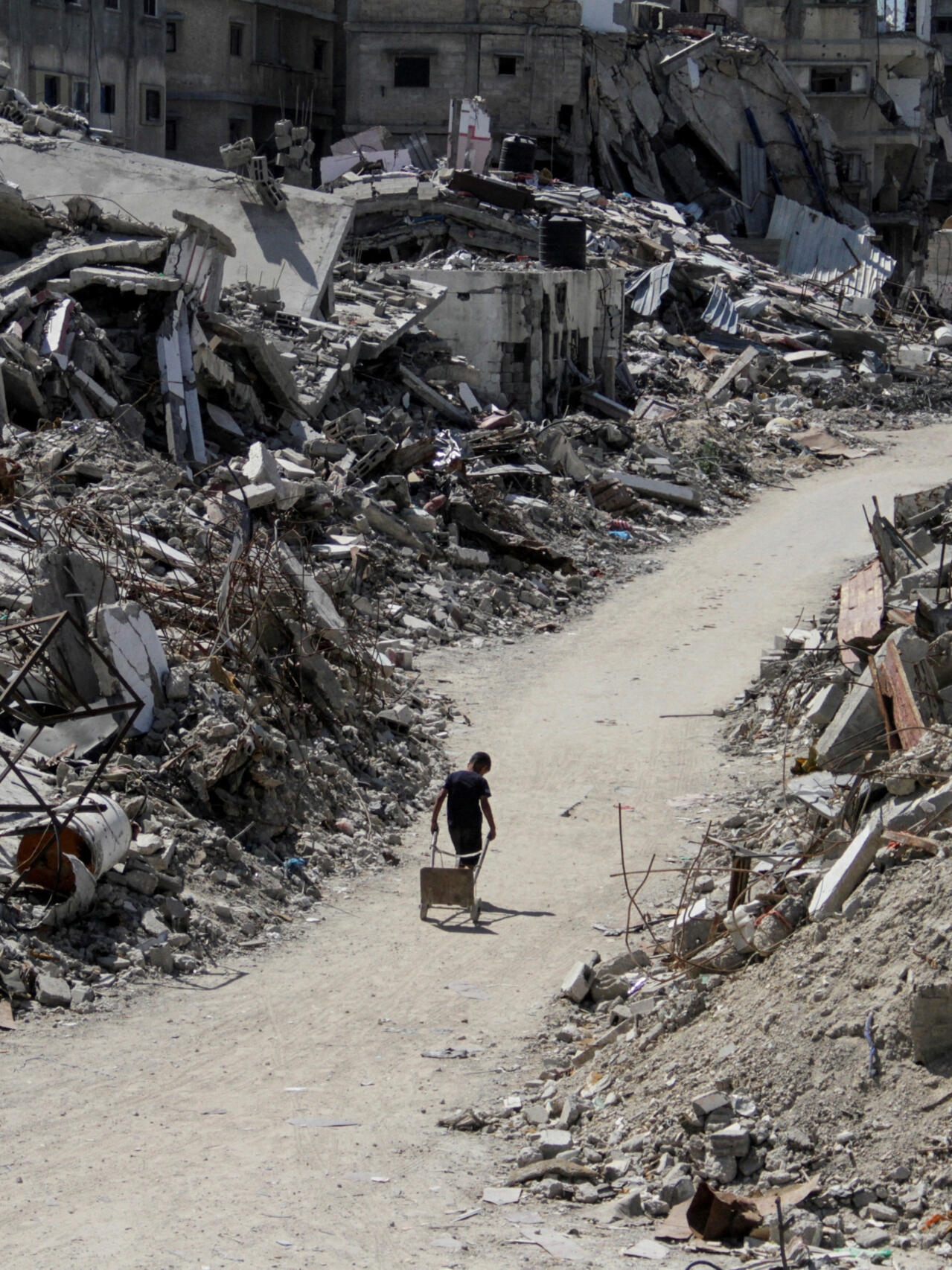
Despite California’s Efforts, Greater Los Angeles Remains the Smoggiest Region in the Nation
Greater Los Angeles has consistently ranked as the smoggiest region in the United States, according to the American Lung Association’s annual reports. The latest report, released on Wednesday, reveals that several Southland counties have received failing grades for the 25th consecutive time. This title is concerning, especially considering California’s reputation for pioneering clean-air regulations.
Progress in Air Pollution Reduction
Over the past two decades, Southern California has made significant strides in reducing air pollution. In the late 1990s, the region experienced around 230 days of unhealthy ozone levels. However, with the introduction of over 1 million electric vehicles and increased use of renewable energy sources, the number of unhealthy smog days decreased by an average of 55 between 2020 and 2022.
The American Lung Association’s Laura Kate Bender acknowledges the progress made in reducing air pollution nationwide, thanks to measures implemented by California and other states. However, she emphasizes that there is still much work to be done to ensure healthy air for all.
Sustainable Development Goals (SDGs)
- Goal 3: Good Health and Well-being
- Goal 7: Affordable and Clean Energy
- Goal 11: Sustainable Cities and Communities
The issue of air pollution aligns with several Sustainable Development Goals (SDGs), including Goal 3 (Good Health and Well-being), Goal 7 (Affordable and Clean Energy), and Goal 11 (Sustainable Cities and Communities). It is crucial to address these goals to improve air quality and protect the health of millions of people living in regions with unhealthy levels of ozone.
Challenges for Environmental Regulators
The latest report highlights the challenges faced by environmental regulators, particularly during the past few years. Factors such as the pandemic-related increase in e-commerce, record-setting heatwaves, and historic wildfires have posed significant obstacles to improving air quality.
Environmental advocates emphasize the importance of this report, as it comes at a critical juncture that will shape the future of air quality in the region. In 2024, regulators will make decisions on a range of environmental rules, but potential funding cuts due to the state budget deficit may hinder progress. Additionally, the upcoming general election will feature ballot measures and candidates who will influence environmental policies.
Addressing Vehicle Emissions
Southern California has long struggled with smog due to the high number of vehicles on the roads. Although electric vehicles and cleaner car engines have significantly reduced pollution, transportation remains the largest source of emissions in California’s major cities. Heavy-duty trucks, cargo ships, and trains contribute significantly to regional pollution.
San Bernardino, known for its warehouses and semi-trucks, experiences nearly six months of unhealthy smog days, surpassing any other county in the nation. The approval of more warehouses and the growth of the logistics industry have led to an increase in daily truck trips, exacerbating the pollution problem.
California air regulators are awaiting approval from the Biden administration for two rules that would phase out heavy-duty trucks and trains powered by fossil fuels. Additionally, the South Coast Air Quality Management District plans to discuss new rules to reduce pollution from railyards and ports, particularly the San Pedro-Long Beach ports complex, which is a major source of smog-forming pollution.
Protecting California’s Environment
Environmental advocates are mobilizing support to uphold California’s law that prohibits new oil and gas drilling near residential areas and schools. This law will be the subject of a contentious ballot referendum in November. Oil and gas wells can release harmful pollutants that contribute to smog formation.
Newsletter Subscription
- Toward a more sustainable California
Stay informed about climate change, energy, and environmental issues by subscribing to our newsletter, “Boiling Point.” Join the conversation and be part of the solution.
Protecting Children’s Health
Dr. Afif El-Hasan, a pediatric physician in Orange County, expresses concern for the 3 million children living in Southern California who are exposed to polluted air. He understands the detrimental effects of smog and air pollution on lung health, including triggering asthma attacks and hindering development.
Of particular concern is the fact that smog levels are highest during the summer when children are out of school and want to spend time outdoors. Balancing the need for physical activity with protecting children’s respiratory health is a constant challenge.
SDGs, Targets, and Indicators Analysis
1. Which SDGs are addressed or connected to the issues highlighted in the article?
- SDG 3: Good Health and Well-being – The article discusses the impact of air pollution on public health, particularly on children’s respiratory health.
- SDG 7: Affordable and Clean Energy – The article mentions the installation of renewable energy sources in the region as a means to reduce air pollution.
- SDG 11: Sustainable Cities and Communities – The article highlights the challenges faced by Southern California in improving air quality and reducing pollution in urban areas.
- SDG 13: Climate Action – The article mentions the impact of climate change, such as heatwaves and wildfires, on air quality.
2. What specific targets under those SDGs can be identified based on the article’s content?
- SDG 3.9: By 2030, substantially reduce the number of deaths and illnesses from hazardous chemicals and air, water, and soil pollution and contamination.
- SDG 7.2: By 2030, increase substantially the share of renewable energy in the global energy mix.
- SDG 11.6: By 2030, reduce the adverse per capita environmental impact of cities, including by paying special attention to air quality and municipal and other waste management.
- SDG 13.1: Strengthen resilience and adaptive capacity to climate-related hazards and natural disasters in all countries.
3. Are there any indicators mentioned or implied in the article that can be used to measure progress towards the identified targets?
- Number of unhealthy smog days: The article mentions a decrease in the number of unhealthy smog days in the Greater Los Angeles region between 2020 and 2022, indicating progress towards reducing air pollution.
- Number of electric vehicles on California roads: The article highlights the presence of over 1 million electric vehicles in California, indicating progress towards reducing emissions from transportation.
- Approval of rules to phase out heavy-duty trucks and trains: The article mentions that California air regulators are waiting for the Biden administration to sign off on rules that would phase out heavy-duty trucks and trains burning fossil fuels, which would contribute to reducing pollution.
Table: SDGs, Targets, and Indicators
| SDGs | Targets | Indicators |
|---|---|---|
| SDG 3: Good Health and Well-being | 3.9: By 2030, substantially reduce the number of deaths and illnesses from hazardous chemicals and air, water, and soil pollution and contamination. | Number of unhealthy smog days |
| SDG 7: Affordable and Clean Energy | 7.2: By 2030, increase substantially the share of renewable energy in the global energy mix. | Number of electric vehicles on California roads |
| SDG 11: Sustainable Cities and Communities | 11.6: By 2030, reduce the adverse per capita environmental impact of cities, including by paying special attention to air quality and municipal and other waste management. | Number of unhealthy smog days |
| SDG 13: Climate Action | 13.1: Strengthen resilience and adaptive capacity to climate-related hazards and natural disasters in all countries. | Approval of rules to phase out heavy-duty trucks and trains |
Copyright: Dive into this article, curated with care by SDG Investors Inc. Our advanced AI technology searches through vast amounts of data to spotlight how we are all moving forward with the Sustainable Development Goals. While we own the rights to this content, we invite you to share it to help spread knowledge and spark action on the SDGs.
Fuente: latimes.com

Join us, as fellow seekers of change, on a transformative journey at https://sdgtalks.ai/welcome, where you can become a member and actively contribute to shaping a brighter future.






